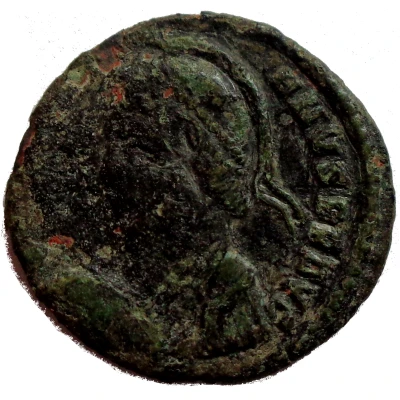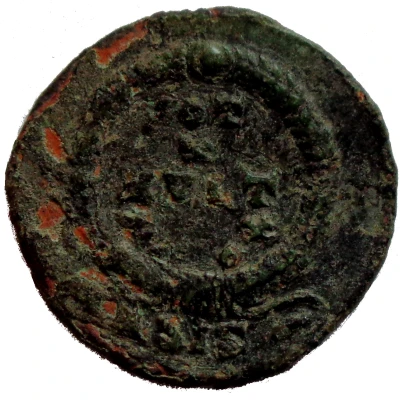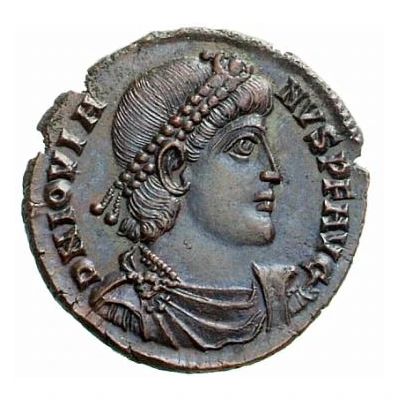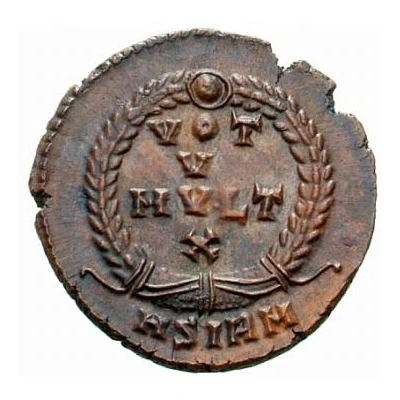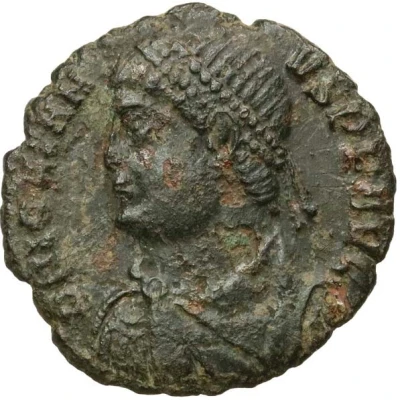
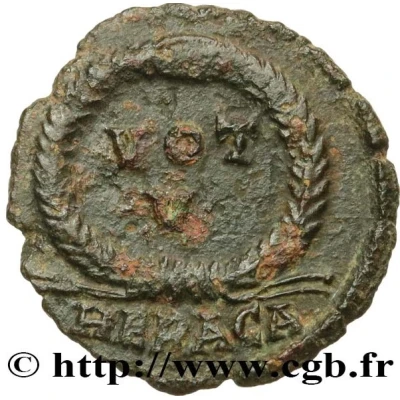

© CGB
Nummus - Jovianus VOT V HERACA; Heraclea
| Bronze | 2.4 g | 19 mm |
| Issuer | Rome › Roman Empire (27 BC - 395 AD) |
|---|---|
| Emperor | Jovian (363-364) |
| Type | Standard circulation coin |
| Years | 363-364 |
| Value | Nummus (1⁄7200) |
| Currency | Solidus, Reform of Constantine (AD 310/324 – 395) |
| Composition | Bronze |
| Weight | 2.4 g |
| Diameter | 19 mm |
| Shape | Round (irregular) |
| Technique | Hammered |
| Orientation | Coin alignment ↑↓ |
| Demonetized | Yes |
| Updated | 2024-10-04 |
| Numista | N#84733 |
|---|---|
| Rarity index | 79% |
Reverse
Inscription within wreath
mintmark in ex.
Script: Latin
Lettering:
VOT
V
Comment
When emperor Julian II "The Apostate" (or "The Philosopher") was killed during his invasion of the Sasasanian empire (Persia, under Shapur II) the leaderless army chose Jovian to extract them from their predicament. He had to make a treaty that cost Rome territory, but managed to get the army out, only to die in his tent from carbon-monoxide poisoning from the brazier. He was succeeded by Valentinian after a reign of only eight months.Jovian issued AE3 coins with 2 reverse legends:
AE3, c. 19 mm: VOT V in two lines within a wreath
AE3, c. 19 mm: VOT V MVLT X in four lines within a wreath
Both AE3's are common. They are "scarce" in RIC (Roman Imperial Coinage, volume VIII, by John Kent), but coins from mints in the east are much more common now than they were when RIC was written...Both AE3's come with obverse bust left and with bust right (but only from different mints--no mint has both left and right busts).
http://augustuscoins.com/ed/Jovian/Jovian.html
During his short reign, Jovian reestablished Christianity as the state church, ending Julian's brief pagan revival.
http://www.forumancientcoins.com/catalog/roman-and-greek-coins.asp?vpar=475
Interesting fact
The Nummus - Jovianus coin was issued during the reign of Emperor Jovian, who ruled the Roman Empire from 363 to 364 AD. This coin was part of a large-scale minting effort by Jovian to restore the Roman currency system, which had been debased under previous emperors. The coin's design features the image of Hercules, who was a popular figure in Roman mythology and was often associated with strength and power. The inclusion of Hercules on the coin may have been intended to symbolize Jovian's efforts to restore the empire's strength and prosperity.
